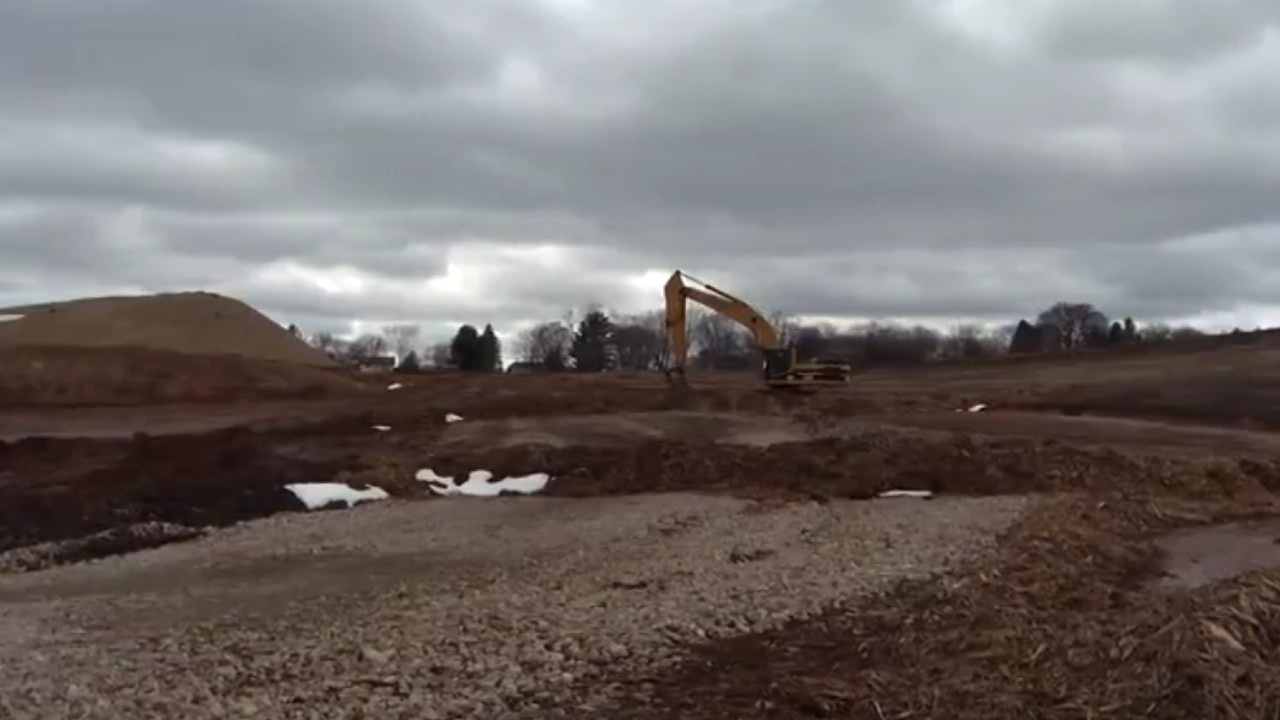Planners of "The Heights' project in St. Paul hope to harness geothermal energy to provide heat, air conditioning
Right now, the site of the sprawling ‘The Heights’ project in St. Paul is a construction zone. But developers have big plans for the 112-acre location, on the city’s east side. The 112-acre 'The Heights' project in St. Paul, Minnesota, aims to harness geothermal energy to provide heat, air conditioning, and heating services for 10 buildings. The project includes a $400 million housing project, part of the $550 million redevelopment of the former Hillcrest Golf Club. The Minnesota Climate Innovation Finance Authority (MnCIFA), or MnCIFA, has announced a $4.7 million loan to help construct and operate the Aquifer Thermal Energy Storage, or ATES, which uses heat pumps, aquifer wells, and a piping system to move heat between buildings and the local aquifer. The system will provide heating and cooling to 10 buildings connected to the system, which is expected to be fully renewable by 2026 or 2027.

Published : 4 weeks ago by Krystal Frasier in Environment
Right now, the site of the sprawling ‘The Heights’ project in St. Paul is a construction zone. But developers have big plans for the 112-acre location, on the city’s east side.
“So, we really want to create a spot for community, a place to live, a place to work, a place to play,” explains Kathryn Sarnecki, the Chief Development Officer with the St. Paul Port Authority. “A place that really pushes the envelope on how to create the next generation of sustainable communities.”
Those plans include a $400 million housing project, part of the $550 million redevelopment of the former Hillcrest Golf Club.
The project has several major goals, including the construction of 1,000 housing units, four light industrial buildings, and the creation of 1,000 manufacturing jobs.
“For this project, coupling renewable energy with affordable housing and jobs in a neighborhood that has been disadvantaged, is really an exciting part of the project,” explains Jenae Batts, a spokesperson with District Energy St. Paul, a non-profit utility partner of the city.
What makes this project different is how its 10 buildings will be heated and cooled and supplied with hot and cold water.
“Geothermal energy is using the heart of the earth in this case,” Batts notes. “It will be the heat of the aquifer to heat and cool buildings.”
The Minnesota Climate Innovation Finance Authority, or MnCIFA, is known as a ‘green bank’ that funds energy projects that might have difficulty finding financial resources elsewhere.
MnCIFA recently announced a $4.7 million loan – its first ever – to help construct and operate the system, called an Aquifer Thermal Energy Storage, or ATES.
The networked system uses heat pumps, aquifer wells, and a piping system to move heat between buildings and the local aquifer.
District Energy St. Paul says the network will provide heating and cooling to 10 buildings connected to the system.
“What the loop provides is a base temperature of 50-60 degrees,” Batt says. “Then, from that 60degrees, the heat pump will increase or decrease the temperature so that it can heat or cool buildings.”
The heat pumps will need to be powered by electricity, she explains.
Batt says beyond the renewable electricity that Xcel Energy already supplies to the grid, there will need to be additional renewable electricity to make the system completely carbon neutral.
The plan is to use an electronic device called a solar photovoltaic on the site, which converts light energy into electricity.
That, Batt says, will generate the power needed to help make the system fully renewable.
Meanwhile, to prepare for the project, the Port Authority had to clean up the former golf course, contaminated by mercury pollution.
“A product was used to spray on the golf course to protect from snow mold,” which Sarnecki explains is an excess of moisture on green areas. “So, to keep the golf course nice and green, they used a product, per the manufacturer’s label, that left a lot of mercury contamination behind.”
She says mercury binds to the soil, but typically doesn’t migrate very far.
“The top one to two feet across the site, especially in the greens, the tee boxes, the fairways,” Sarnecki says. “We dug them all out and they have different levels of contamination out there that we had to treat.”
She says infrastructure installation -building roads for example- could begin later this year, and that initial building construction could start in 2025.
The energy system is expected to be online by 2026 or 2027, but Sarnecki says it will need about $6 million more in funding before it can be completed.
For now, though, the project is slated to become one of the state’s largest green energy products.
“This really has the potential to be a model for other redevelopment in Minnesota, and even beyond,” Batts says.
“It really provides us a way to provide more efficient heating and cooling,” Sarnecki adds. “And when it’s coupled with solar power- we’re going to have solar panels on the site- it provides a carbon-free source of electricity.”
Topics: Climate Change, ESG
